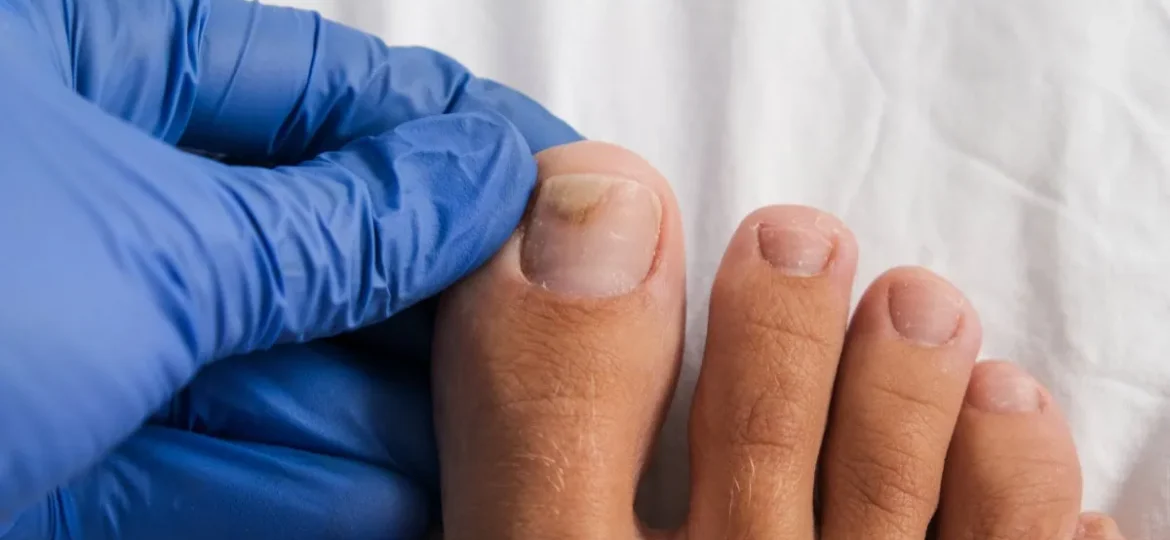
Affecting millions of people, Toenail fungus, or onychomycosis, is a common and stubborn condition that must not be ignored. It often causes thickened, discolored, or brittle nails and can lead to discomfort or even pain if left untreated. While prescription medications are available, many people seek natural remedies like hydrogen peroxide as an effective treatment. This blog will explore how hydrogen peroxide works against nail fungus, how to use it, key precautions, and when to consult with a healthcare professional.
How Hydrogen Peroxide Works for Toenail Fungus
Hydrogen peroxide is widely known for its antiseptic properties, which help to kill bacteria and fungi. As a powerful oxidizing agent, it releases oxygen when it comes into contact with affected skin or nails, effectively killing the fungus that infects nails. By breaking down fungal cell walls, hydrogen peroxide may reduce infection and prevent the fungus from spreading. Unlike some over-the-counter creams that may only address the surface of the nail, hydrogen peroxide has the potential to penetrate deeper into the affected area, making it an effective treatment for toenail fungus.
Methods of Applying Hydrogen Peroxide
There are a few popular ways to use hydrogen peroxide for toenail fungus. Here’s a look at some of the most effective methods:
- Direct Application
Try cleaning and drying the infected area thoroughly. Use a cotton ball soaked in 3% hydrogen peroxide and apply it directly to the fungal nail. Let it sit for 5-10 minutes before rinsing with water. Repeat this once or twice daily until the infection begins to clear. Be careful not to overuse hydrogen peroxide, as it can lead to skin irritation, particularly if you have sensitive skin. - Hydrogen Peroxide Soak
Create a foot soak by mixing equal parts of 3% hydrogen peroxide and water in a basin large enough for your feet. Soak your affected foot for 15-20 minutes, then rinse and pat dry. This method can be done once daily, as it allows hydrogen peroxide to reach all areas of the toenails while keeping the skin hydrated. - Combination with Baking Soda
Baking soda is another popular natural remedy that may help with toenail fungus. Combined with hydrogen peroxide, it creates an environment that kills the fungus by raising the pH level, making it harder for fungi to survive. Mix a paste of baking soda and hydrogen peroxide and apply it to the fungal nail, letting it sit for 10-15 minutes before rinsing. Start slowly, monitor the reaction, and increase frequency between two and three times a week. - Pairing with Essential Oils
Essential oils like tea tree oil have antifungal properties that may work well with hydrogen peroxide. Add a few drops of tea tree oil to a hydrogen peroxide soak for added efficacy. This method targets the fungus and soothes the skin and may prevent allergic reactions, as tea tree oil is known for its gentle antiseptic qualities. - Hydrogen Peroxide and Apple Cider Vinegar
Another combination to consider is hydrogen peroxide with apple cider vinegar. Both are known for their antimicrobial properties, which can help treat nail fungus. Mix equal parts of each and apply to the affected nail, letting it sit for 10-15 minutes. Be cautious, as the mixture may cause a tingling sensation; discontinue if you experience significant discomfort.
Important Considerations When Using Hydrogen Peroxide for Toenail Fungus Treatment
While hydrogen peroxide is generally safe, it’s essential to keep some things in mind to prevent side effects:
- Concentration Matters: Use only 3% hydrogen peroxide, as higher concentrations can cause skin irritation or burns.
Skin Irritation: If you notice any redness, dryness, or irritation on the skin around the fungal nail, reduce usage frequency or discontinue use. - Allergic Reactions: Before using hydrogen peroxide on larger areas, test a small amount on a skin patch to ensure no adverse reaction.
- Clean and Dry Feet: Always keep your feet clean and dry before and after treatment. This prevents the fungus from spreading and promotes healing.
Complementary Treatment Options
In addition to hydrogen peroxide, consider other natural remedies that may complement your treatment plan:
- Tea Tree Oil: As mentioned earlier, tea tree oil has antifungal properties that may enhance hydrogen peroxide’s effectiveness.
- Baking Soda: Adding baking soda to your routine may help balance pH levels and keep the affected area dry.
- Apple Cider Vinegar: Known for its acidic nature, apple cider vinegar can be an effective addition to a foot soak for fungus control.
When to Visit a Podiatrist
While hydrogen peroxide and other natural remedies may help treat mild cases of toenail fungus, they are not always effective in severe cases. If you experience any of the following, it’s time to consult with a healthcare professional:
- Persistent Infection: If the fungus persists despite home treatment or appears to be spreading, professional care is necessary.
- Severe Symptoms: Pain, significant thickening of the nail, or signs of severe infection, like swelling, require medical attention.
- Side Effects: If you notice worsening skin irritation or potential allergic reactions, a podiatrist can offer alternative treatment options that may be safer for you.
- Chronic Conditions: Individuals with diabetes or compromised immune systems should seek medical advice before starting any treatment for toenail fungus.
Prevention Tips: Keeping Toenail Fungus at Bay
To reduce your risk of reinfection, follow these simple prevention tips:
- Keep Feet Dry and Clean: Fungi thrive in moist environments, so make sure your feet are dry, especially after showers or exercise.
- Avoid Walking Barefoot: In public places, like gyms or swimming pools, wear sandals to protect against fungal exposure.
- Maintain Good Foot Hygiene: Regularly trim and clean your nails, avoiding shared nail clippers or pedicure tools.
Wear Breathable Shoes: Footwear that allows airflow helps keep feet dry and reduces the chance of fungal growth.
Conclusion
Hydrogen peroxide is a widely accessible and affordable option for treating toenail fungus, especially when used in conjunction with other natural remedies like tea tree oil and apple cider vinegar. However, it’s important to proceed with caution, as hydrogen peroxide can cause skin irritation if used improperly. If your nail fungus doesn’t improve or you experience severe side effects, consult with a healthcare professional for more effective treatment options. By staying proactive and vigilant, you can keep your toenails healthy and prevent future infections. Visit our Tampa Foot clinic or West Palm Beach Foot clinic for a consultation with our certified and experienced podiatrists. We have alternative new-generation treatments using lasers that provide excellent results.






